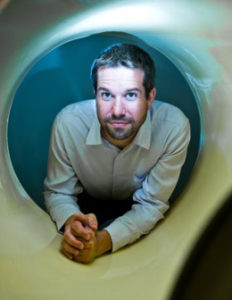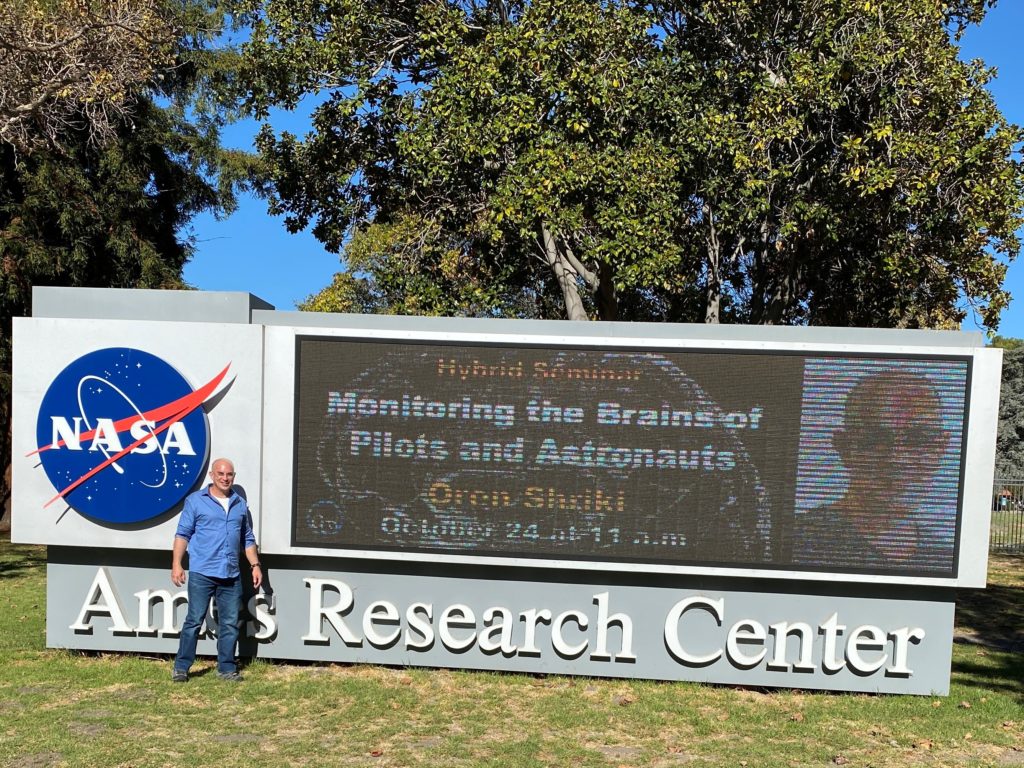
Ilan Dinstein and the Biological Causes of Autism
Ilan Dinstein and the Biological Causes of Autism
December 10, 2013
Dr. Ilan Dinstein, a 37-year-old autism researcher, is a member of BGU’s Department of Psychology and the Zlotowski Center for Neuroscience. He joined BGU in October 2012, choosing it over other universities in the United States and in Israel.
Among the reasons Dr. Dinstein was drawn to the field of autism research was his personal experience of having a cousin with autism.
Dr. Dinstein is now establishing BGU’s neurophysiological autism lab, the first of its kind in Israel. While other labs in Israel study autism from a behavioral perspective, Dr. Dinstein’s lab focuses on the brain.
View a video of Dr. Dinstein speaking about his research >>
“We want to transform the definition of autism from one that is behavioral to one that is biological,” he says.
Based on recent information from the U.S. Centers for Disease Control and Prevention (CDC), one in 50 children in the United States is diagnosed with autism, with similar numbers reported in Israel. These figures have skyrocketed since the 1980s, when only one in 5,000 received this diagnosis. Autism is rapidly becoming the most prevalent developmental disorder in children worldwide.
However, there are currently no objective biological measures to help clinicians identify autism. The disorder is often identified at the age of two or three, but may also easily remain undiagnosed or misdiagnosed for many years.
“During the last 10 years or so, scientists have realized that autism is not one disorder, but rather an entire family of disorders with distinct biology. For example, there are many genes that raise the risk of developing autism, suggesting that there are multiple biological paths that may lead a child to display social and communication problems,” says Dr. Dinstein.
“If we can develop a tool that will reliably identify even 20 to 30 percent of autistic children based on MRI scans and/or EEG exams at the age of one, we will have revolutionized the field,” he adds.
“Even today, early diagnosis paves the way for early behavioral intervention, which leads to better prognosis. If we can understand what’s different in the biology of children with autism, we may be able to identify the mechanisms that need to be corrected,” says Dr. Dinstein.
“Rather than treating all individuals with autism using the same behavioral therapy, as is generally done today, it may be possible to develop targeted pharmacological therapies that will nudge the child’s development back to a typical course.
“The human brain has great plasticity during early childhood, which disappears as the brain matures and becomes more rigid. With developmental disorders, it is probably critical to intervene before this period of plasticity ends,” he explains.
Dr. Dinstein earned his Ph.D. in neuroscience at New York University, and did postdoctoral work at Carnegie Mellon University. At BGU, he plans to continue his successful collaborations with autism experts around the world, who include Prof. Marlene Behrmann at Carnegie Mellon University and Prof. Eric Courchesne at the University of California, San Diego.
According to Dinstein, BGU provides an ideal setting for this type of research: “We’re next door to the only major hospital in the Negev, Soroka University Medical Center, which serves a population of over one million people.
“Soroka has fantastic doctors,” he adds, noting that he has started working closely with the hospital’s pediatric neurologists and psychiatrists.
What’s more, Soroka is home to BGU’s Brain Imaging Research Lab, which is equipped with a powerful new 3 Tesla (3T) MRI that is dedicated to research 50 percent of the time. This MRI was purchased thanks to the generosity of Americans for Ben-Gurion University donors.
Working in the Negev also provides access to unique patient populations that may shed new light on the genetics of autism. Specifically, the local Bedouin community is faced with unique genetic issues due to widespread interfamily marriages. This may reveal important clues about how certain genetic abnormalities affect brain development in autism.
“Conducting this research in Beer-Sheva will also improve the treatment patients will get,” he says. “Children in the Negev don’t usually receive EEGs and MRI scans as part of their diagnosis.
“Our research will also enable a more thorough clinical characterization of participating children and give families detailed information about their child’s health.”
Coming to Beer-Sheva also represents something of a homecoming, as his father, Itshak, is a professor emeritus of BGU’s Department of Electrical Engineering.
In recognition of his achievements, Dr. Dinstein was awarded an Alon Fellowship from the Israeli Council for Higher Education and the Sieratzki Prize for Advances in Neuroscience during his first year as a faculty member at BGU.
“Being in Israel, at BGU, is part of my personal agenda,” Dinstein says. “I feel a deep motivation to develop the infrastructure that will enable us to perform top notch research about developmental disorders here in the Negev. I’m confident that we can do groundbreaking research here and there’s nowhere else I’d rather be.”




